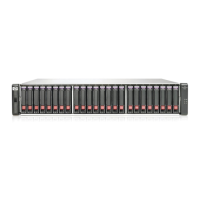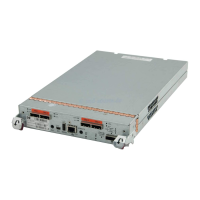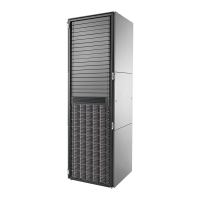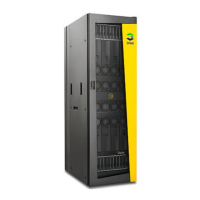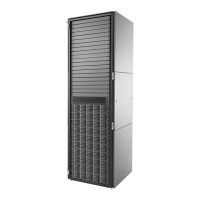30 Getting started
Snapshot operations are I/O-intensive. Every write to a unique location in a master volume after a
snapshot is taken will cause an internal read and write operation to occur in order to preserve the snapshot
data. If you intend to create snapshots of, create volume copies of, or replicate volumes in a vdisk, ensure
that the vdisk contains no more than four master volumes, snap pools, or both. For example: 2 master
volumes and 2 snap pools; 3 master volumes and 1 snap pool; 4 master volumes and 0 snap pools.
Guidelines to keep in mind when performing a volume copy include:
• The destination vdisk must be owned by the same controller as the source volume.
• The destination vdisk must have free space that is at least as large as the mount of space allocated to
the original volume. A new volume will be created using this free space for the volume copy.
• The destination vdisk does not need to have the same attributes (such as disk type, RAID level) as the
volume being copied.
• Once the copy is complete, the new volume will no longer have any ties to the original.
• Volume Copy makes a copy from a snapshot of the source volume; therefore, the snap pool for the
source volume must have sufficient space to store snapshot data when performing this copy.
Related topics
• Creating a volume copy on page 71
• Aborting a volume copy on page 72
• Viewing information about a volume on page 94
• Deleting schedules on page 77
About the VDS and VSS hardware providers
Virtual Disk Service (VDS) enables host-based applications to manage vdisks and volumes. Volume
Shadow Copy Service (VSS) enables host-based applications to manage snapshots. For more information,
see the VDS and VSS hardware provider documentation for your product.
About RAID levels
The RAID controllers enable you to set up and manage vdisks, whose storage may be spread across
multiple disks. This is accomplished through firmware resident in the RAID controller. RAID refers to vdisks
in which part of the storage capacity may be used to store redundant data. The redundant data enables
the system to reconstruct data if a disk in the vdisk fails.
Hosts see each partition of a vdisk, known as a volume, as a single disk. A volume is actually a portion of
the storage space on disks behind a RAID controller. The RAID controller firmware makes each volume
appear as one very large disk. Depending on the RAID level used for a vdisk, the disk presented to hosts
has advantages in fault-tolerance, cost, performance, or a combination of these.
NOTE: Choosing the right RAID level for your application improves performance.
The following tables:
• Provide examples of appropriate RAID levels for different applications
• Compare the features of different RAID levels
• Describe the expansion capability for different RAID levels
Table 4 Example applications and RAID levels
Application RAID level
Testing multiple operating systems or software development (where redundancy is not an issue) NRAID
Fast temporary storage or scratch disks for graphics, page layout, and image rendering 0
Workgroup servers 1 or 10
Video editing and production 3
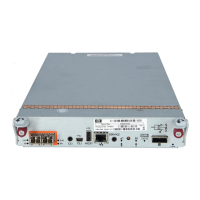
